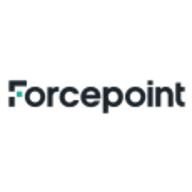

GitGuardian Public Monitoring and Forcepoint Risk Adaptive Protection for DLP are competing products in the data protection category. While GitGuardian is strong in real-time monitoring of exposed credentials, Forcepoint outperforms with its comprehensive data loss prevention strategy.
Features: GitGuardian offers rapid identification of exposed credentials, intuitive alert system, and detailed reporting tools. Forcepoint provides adaptive security strategies, contextual insights, and automated policy adjustments.
Ease of Deployment and Customer Service: GitGuardian is straightforward with easy CI/CD integration and responsive support. Forcepoint, while complex due to extensive coverage, delivers professional support and guidance.
Pricing and ROI: GitGuardian is competitively priced with low setup costs, delivering quick ROI due to efficient public exposure detection. Forcepoint requires a higher initial investment but offers significant ROI through its broad risk management capabilities.


Forcepoint Risk Adaptive Protection for DLP offers dynamic security measures tailored to data protection needs, ensuring sensitive information is safeguarded efficiently.
Forcepoint Risk Adaptive Protection for DLP is designed to provide a balanced approach to data loss prevention by adapting security measures based on real-time risk assessment. This innovative system prioritizes protecting sensitive information while allowing for seamless workflow integration, making it a suitable choice for organizations looking to enhance their data protection strategies.
What are the key features of Forcepoint Risk Adaptive Protection for DLP?Forcepoint Risk Adaptive Protection for DLP is particularly effective in industries with stringent data protection requirements such as healthcare, finance, and government. It adapts its security posture to the specific risks faced in these sectors, addressing compliance mandates and safeguarding sensitive information efficiently.
GitGuardian Public Monitoring allows real-time GitHub scanning and alerting to uncover sensitive company information hiding in online repositories. It monitors both organization repositories and developers' personal repositories. The solution gives visibility to developers and security teams on this very critical blindspot that are the organization developers' personal repositories on GitHub (80% of leaked corporate secrets on public GitHub come from developers’ personal repositories).
GitGuardian Public Monitoring is particularly interesting for companies with large development teams (above 200 developers) and modern development practices.
GitGuardian Public Monitoring cover 350+ API providers, database connection strings, private keys, certificates, usernames and passwords and intellectual property. It uses sophisticated pattern matching techniques to detect credentials that cannot be strictly defined with a distinctive pattern (like unprefixed credentials). The algorithm has a high precision (91% “true positive” feedback following our alerts, as reported by our users.)
The alerting is done in real-time (a few seconds after the secret was publicly exposed) which allows fast remediation involving in a collaborative way developers, security teams and operations.
GitGuardian Public Monitoring also allows red teams and pentesters to proactively look for sensitive information by performing complex queries on 12 billion documents and metadata from more than 3 years of GitHub history.
GitGuardian Public Monitoring scans public GitHub activity in real-time, helping organizations detect sensitive information leaks in source code repositories. Our solution gives Threat Intelligence and Security teams full visibility over their organization’s public GitHub Attack Surface, by monitoring both organization-owned repositories and developers' personal repositories.
With 80% of secrets and credentials leaks on public GitHub finding their source in developers' personal repositories, GitGuardian for Public Monitoring helps organizations address a critical security blind spot.
With real-time incident notification, Threat Intelligence and Security teams are guaranteed to reach the incident scene before everyone else and take action to mitigate the threat of breaches and intrusions.
We monitor all Data Loss Prevention (DLP) reviews to prevent fraudulent reviews and keep review quality high. We do not post reviews by company employees or direct competitors. We validate each review for authenticity via cross-reference with LinkedIn, and personal follow-up with the reviewer when necessary.